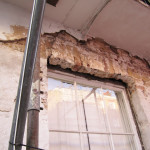This is about how a diminution valuation simplified using an imaginary claim with only one effective difference between the parties. A pdf of the full article can be downloaded from here, or by clicking the image; A landlord claims against a tenant in dilapidations. The building surveyors agree everything at the Contractual Claim level, but […]
Break Clause Conditions – A Legal Minefield
Operating a break clause is not simply a case of submitting a formal notice to terminate the lease in accordance with the break clause conditions. This is far from the case, and the devil is in the detail. Break clauses will almost always contain specific requirements for performance; Failure to strictly comply with these pre-conditions […]
Tenant Guide to Landlord Disrepair Claims
The expiry of a lease presents a landlord with the possibility of an income void lasting many months, which has an even greater impact in a difficult lettings market. It is unsurprising, therefore, that unscrupulous landlords sometimes regard a terminal dilapidations claim as a means of offsetting the leaner times ahead. What can a tenant […]
Diminution valuation in dilapidations cases
Critique of the “Stand In The Street” method – in contrast to the Shortlands residual valuation method THE CRUDE “STAND IN THE STREET” METHOD This method is dying out gradually. It consists of looking at the building without analysis of the schedule of dilapidations and asking oneself “Well, really, what difference does it make?” – […]
Head tenant held liable for disrepairs outside demise
A residential long leaseholder may be liable without notice to his subtenant under the Landlord and Tenant Act 1985 for disrepairs to communal areas outside his demise by virtue of having a right over those areas. In Edwards v Kumarasamy (2015) Mr K was the long leaseholder of a flat in a residential block. Mr […]
Why is the Landlord’s Intention Relevant to Dilapidations?
Why is the landlord’s intention relevant to dilapidations at the end of the lease term? This paper was written for the RICS Dilapidations Forum Conference 30 September 2014 by Guy Fetherstonhaugh QC. Introduction It is notoriously the case that a claim for damages for terminal dilapidations is limited by section 18(1) of the Landlord and […]
Dilapidations Definition. What is Dilapidations?
Dilapidations definition is an allegation of a breach of a tenant’s legal obligations under the repair, decoration and reinstatement covenants stipulated within a property lease.” Following the identification of a possible breach of lease, a landlord will usually submit a claim for damages (dilapidations claim), which is enforceable in a court of law. Simplified – a […]
Why Are Dilapidations Claims So Complex and Costly?
Dilapidation claims are often contentious, mainly due to the differences between the landlord’s interpretation of disrepair to the space in question vs. the tenants. The two parties will, no doubt, also have differing viewpoints on the level of repair work that should subsequently be undertaken. So who is right – the tenant or the landlord? […]
Falcon Chambers on Dilapidations Claims
At the heart of any dilapidations dispute is the appropriate meaning to attribute to the words of a repairing covenant. This paper considers, first, the process of construing repairing covenants and establishing whether a landlord or a tenant has a remedy in any given case. Secondly, the various remedies open to the parties will be […]
Dilapidations Settlements – Do’s and don’ts
Where proceedings are issued but the claim reaches a dilapidations settlement beforehand, the lawyers will usually deal with the documentation of the settlement. However, the vast majority of dilaps claims settle without the need for court proceedings and the surveyors document the agreements. The following is a checklist for those situations: Do set out the […]








